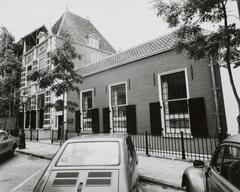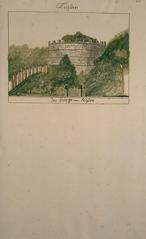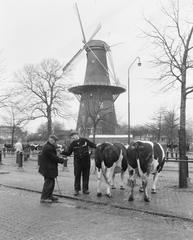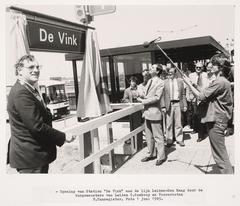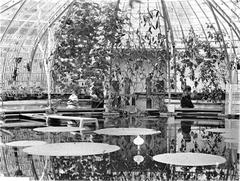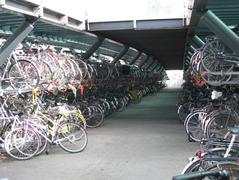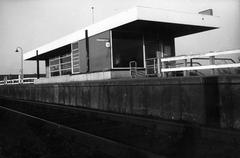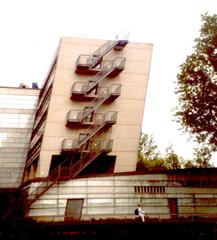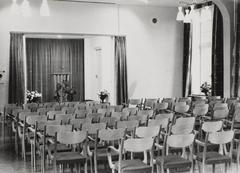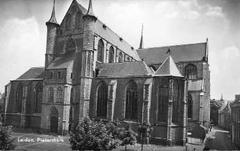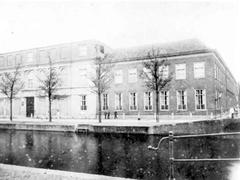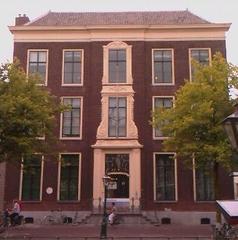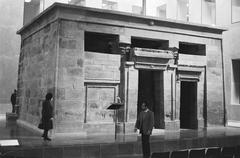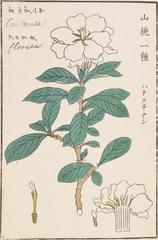Spanjaardsbrug: Visiting Hours, Tickets, and Guide to Leiden’s Historic Bridge
Date: 04/07/2025
Introduction
Spanjaardsbrug, or the “Spanish Bridge,” is one of Leiden’s most recognizable historical landmarks. Spanning the Zijl River at the confluence with the Oude Rijn and Rijn-Schiekanaal, this iconic bascule bridge connects Leiden with Leiderdorp and has played a central role in the city’s history, culture, and urban evolution. Today, it stands as a testament to Dutch resilience and innovation, offering visitors not only a passage across the water but also a gateway to Leiden’s vibrant past and sustainable urban future (Monumenten.nl; Travellifebalance.com).
Historical Overview
Origins and Early History
Dating back to the era of the Eighty Years’ War (1568–1648), Spanjaardsbrug derives its name from the period of Spanish occupation and the notable Siege of Leiden in 1574. The bridge site has long been vital for trade and movement, its name memorializing the city’s endurance during a pivotal chapter in Dutch independence (Monumenten.nl).
Architectural Development
The original crossing evolved into the current bascule (“ophaalbrug”) structure, constructed in 1933 and commissioned by the Province of South Holland. Its double upright supports and the bridgekeeper’s house on the Leiden side are hallmarks of Dutch interwar architecture. Designated a municipal monument, the bridge embodies both robust engineering and a commitment to heritage preservation (Monumenten.nl).
Spanjaardsbrug’s Role in Urban Life
Historically, Spanjaardsbrug facilitated not only local commerce but also the daily commutes of pedestrians, cyclists, and vehicles. By the 21st century, it had become a critical artery with over 10,000 cyclists crossing daily. However, the narrow lanes and mixed traffic prompted safety and congestion concerns, spurring a new vision for the bridge’s future (Sleutelstad.nl).
Transition to a Sustainable Urban Landmark
Fietspoort Spanjaardsbrug Project
In a move to prioritize sustainable mobility, Leiden, Leiderdorp, and the Province of South Holland launched the “Fietspoort Spanjaardsbrug” initiative. By early 2027, the bridge will become car-free, dedicated to cyclists, pedestrians, and authorized vehicles (such as public transport and emergency services). This transformation, supported by significant municipal investment, will create safer and greener routes, alleviating congestion and improving the urban environment (Sleutelstad.nl).
Visiting Information
Hours and Tickets
- Visiting Hours: Open to pedestrians and cyclists 24/7.
- Tickets: No tickets or entrance fees required to cross the bridge.
Accessibility
- The bridge features dedicated pedestrian and cycling paths.
- Suitable for visitors with mobility aids; gentle ramps and smooth surfaces are integrated, though the drawbridge design may involve some elevation change.
- The area is well-signposted, and digital maps are available through local tourism apps (Leiden Holland).
Getting There
- By Train: Leiden Centraal Station is about 2.5 km away; the route is well-marked for walking or cycling.
- By Bike: Bike rentals are available throughout Leiden.
- By Bus: Local buses stop nearby, and public transport will remain permitted on the bridge.
Tips for Visitors
- Early mornings and late afternoons offer the best light for photos and a quieter atmosphere.
- Bring a camera to capture the scenic waterways and historic architecture.
- Check the Visit Leiden Event Calendar for festivals and special events.
Nearby Attractions
Enhance your visit by exploring these highlights within walking or cycling distance:
- Leiden’s Old City Center: Picturesque canals, cobbled streets, and vibrant market squares.
- Museum De Lakenhal: Showcasing Leiden’s textile and art history.
- Hortus Botanicus Leiden: One of the oldest botanical gardens in the world.
- Rijksmuseum van Oudheden: The National Museum of Antiquities.
- Burcht van Leiden: Medieval fortress with panoramic views over the city.
Events and Community Life
Spanjaardsbrug serves as a lively backdrop for local festivals like the Lakenfeesten and canal parades. Community events, design exhibitions, and public consultation meetings related to the bridge’s redevelopment foster local engagement and showcase Leiden’s commitment to sustainable mobility (Visit Leiden Event Calendar).
Safety and Infrastructure Improvements
The Fietspoort project includes redesigning surrounding streets (e.g., Lage Rijndijk as a “fietsstraat” or bicycle street) and upgrading intersections, particularly on the Leiderdorp side. These enhancements, coupled with public participation, aim to reduce accidents and improve user experience for all ages (Sleutelstad.nl).
Practical Tips
- Best Time to Visit: Daylight hours in spring and summer for pleasant weather and vibrant city life.
- Navigation: Use local maps and digital guides. The bridge is part of several key cycling and walking routes.
- Amenities: While the bridge itself has no facilities, nearby neighborhoods offer cafes, shops, and public restrooms.
Frequently Asked Questions (FAQ)
Q: Is the Spanjaardsbrug open to cars?
A: As of 2025, the bridge is closed to regular car traffic; only public transport and emergency vehicles may cross.
Q: Are guided tours available?
A: While there are no bridge-specific tours, many city walking and cycling tours include Spanjaardsbrug as a highlight.
Q: What are the best nearby attractions?
A: The historic city center, Burcht van Leiden, Hortus Botanicus, and several museums are all easily accessible.
Q: Are there community events at the bridge?
A: Yes, especially during festivals and as part of the Fietspoort project’s public engagement.
Q: Is the bridge accessible for people with disabilities?
A: Yes, with ramps and smooth paths, but check for updates during ongoing construction.
Summary and Travel Tips
Spanjaardsbrug offers a unique window into Leiden’s past and future—a historic monument now at the forefront of sustainable urban planning. With free public access, integration into citywide cycling networks, and proximity to top attractions, it is a must-visit for history buffs, cyclists, and casual travelers alike. To make the most of your visit:
- Explore during daylight for the best views and photos.
- Take advantage of cycling and walking routes to discover more of Leiden.
- Stay informed about ongoing improvements and events via official city websites and apps like Audiala.
Sources
- Monumenten.nl
- Travellifebalance.com
- Sleutelstad.nl (2022)
- Sleutelstad.nl (2024)
- Leiden Holland
- Visit Leiden Event Calendar
- Leiden Municipality Project Page
- Leiderdorp Municipality Project Info
For the latest travel tips, event updates, and audio guides for Leiden’s historical sites, download the Audiala app and follow us on social media.
